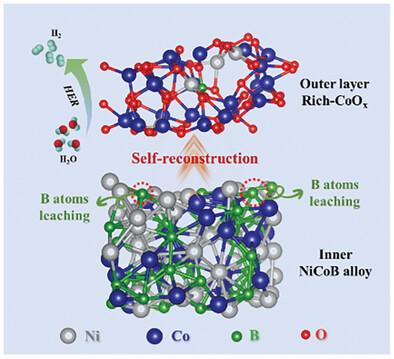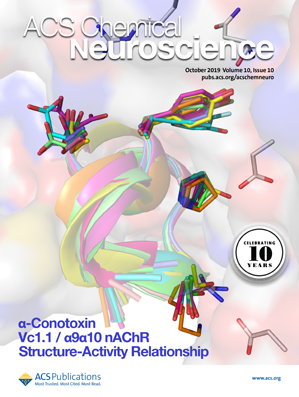Self-Reconstructed Amorphous CoOx/NiCoB Heterostructure Catalysts for Enhanced HER Performance
IF 4.1
3区 医学
Q2 BIOCHEMISTRY & MOLECULAR BIOLOGY
引用次数: 0
Abstract
Amorphous electrocatalysts exhibit potentials as precursors for triggering the in situ reconstruction to generate the real catalytic active species toward electrochemical processes. In this work, a new kind of amorphous Ni-Co-B alloy pre-catalysts for hydrogen evolution reaction (HER) is reported, which is obtained via a facile electroless plating strategy on the nickel foam (NF). Interestingly, X-ray photoelectron spectroscopy, X-ray absorption spectroscopy and morphological characterizations identify the in situ reconstruction process during HER accompanied by the preferential leaching of surface B species and the formation of amorphous CoOx nanosheet arrays as the real active sites. Benefiting from the synergistic effect between the surface CoOx layer and the inner unaltered NiCoB phase, the resultant CoOx/NiCoB heterostructure catalyst achieves a low overpotential of 209 mV at the elevated current density of 500 mA cm−2 and maintains stability for 300 h without significant attenuation. Theoretical calculation reveals the electron reconfiguration at the interfaces between the newly formed CoOx and inner NiCoB phases, which is favorable for the stabilization of reconstructed active oxide layers at the reductive potentials for catalyzing HER. Moreover, the CoOx/NiCoB heterostructure optimizes hydrogen adsorption free energies, thereby enhancing HER catalytic activity.

自重构非晶 CoOx/NiCoB 异质结构催化剂用于增强 HER 性能
非晶态电催化剂作为触发原位重构的前驱体,在电化学过程中具有生成真正催化活性物种的潜力。在这项工作中,报告了一种用于氢进化反应(HER)的新型无定形 Ni-Co-B 合金前催化剂,这种催化剂是通过在泡沫镍(NF)上进行简便的无电解电镀策略获得的。有趣的是,X 射线光电子能谱、X 射线吸收光谱和形貌表征确定了氢进化反应过程中的原位重构过程,伴随着表面 B 物种的优先浸出和无定形 CoOx 纳米片阵列的形成,这些才是真正的活性位点。得益于表面 CoOx 层和内部未发生变化的镍钴相之间的协同效应,由此产生的 CoOx/NiCoB 异质结构催化剂在 500 mA cm-2 的高电流密度下实现了 209 mV 的低过电位,并在 300 小时内保持稳定,无明显衰减。理论计算显示,在新形成的 CoOx 与内部 NiCoB 相之间的界面上存在电子重构,这有利于重构活性氧化物层在还原电位下稳定,从而催化 HER。此外,CoOx/NiCoB 异质结构优化了氢吸附自由能,从而提高了 HER 催化活性。
本文章由计算机程序翻译,如有差异,请以英文原文为准。
求助全文
约1分钟内获得全文
求助全文
来源期刊

ACS Chemical Neuroscience
BIOCHEMISTRY & MOLECULAR BIOLOGY-CHEMISTRY, MEDICINAL
CiteScore
9.20
自引率
4.00%
发文量
323
审稿时长
1 months
期刊介绍:
ACS Chemical Neuroscience publishes high-quality research articles and reviews that showcase chemical, quantitative biological, biophysical and bioengineering approaches to the understanding of the nervous system and to the development of new treatments for neurological disorders. Research in the journal focuses on aspects of chemical neurobiology and bio-neurochemistry such as the following:
Neurotransmitters and receptors
Neuropharmaceuticals and therapeutics
Neural development—Plasticity, and degeneration
Chemical, physical, and computational methods in neuroscience
Neuronal diseases—basis, detection, and treatment
Mechanism of aging, learning, memory and behavior
Pain and sensory processing
Neurotoxins
Neuroscience-inspired bioengineering
Development of methods in chemical neurobiology
Neuroimaging agents and technologies
Animal models for central nervous system diseases
Behavioral research
 求助内容:
求助内容: 应助结果提醒方式:
应助结果提醒方式:


